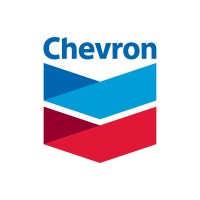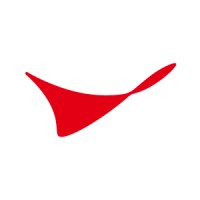Company Cyber Security Posture
NANA
NA Company Details
NA
NA
NA
NA
NA
NA
Scan still pending
NA
NA
Between 200 and 800
This score is AI-generated and less favored by cyber insurers, who prefer the TPRM score.
 NA Global Score
NA Global Score.png)

Company Scoring based on AI Models
| Model Name | Date | Description | Current Score Difference | Score |
|---|---|---|---|---|
| AVERAGE-Industry | 03-12-2025 | This score represents the average cybersecurity rating of companies already scanned within the same industry. It provides a benchmark to compare an individual company's security posture against its industry peers. | N/A | Between 200 and 800 |
Company Cyber Security News & History
| Entity | Type | Severity | Impact | Seen | Url ID | Details | View |
|---|
Company Subsidiaries

NA
Access Data Using Our API

Get company history
.png)
NA Cyber Security News
Advanced Research on Integrated Energy Systems Cyber Range
To match the complexity of modern multilayer grids, the cyber range is designed to evaluate multiowner power systems and visualize ...
INL, 2 Universities to Advance R&D on Energy, Cybersecurity
INL will partner with U of I to enhance nuclear power system efficiency, fuel use and fuel production. Nuclear Integrated Energy Systems. The ...
Industry | ARIES: Advanced Research on Integrated Energy Systems
The Advanced Research on Integrated Energy Systems (ARIES) platform is designed to be highly flexible, giving industry partners the ability to “plug and play” ...
Integrating artificial intelligence in energy transition: A comprehensive review
AI integration enhances renewable energy by optimizing photovoltaic arrays and energy production setups. •. AI-driven demand-side management uses smart ...
Cyber-physical attack and the future energy systems: A review
A cyber-physical attack compromises a physical system by utilizing its digital or cyber components (Langer et al., 2016). In the energy sector, cyber-physical ...
Juan Torres — Associate Laboratory Director, Energy Security, Resilience, and Integration
About NREL · Juan Torres — Associate Laboratory Director, Energy Security, Resilience, and Integration. Mission & Vision · Leadership · Awards.
Idaho researchers lead DOE effort to protect nation’s wind energy infrastructure
Researchers at INL are leading several U.S. Department of Energy-funded efforts to protect the nation's wind energy infrastructure.
Cyber-attack research for integrated energy systems by the correlated matrix based object-oriented modeling method
As the information and communication systems play a more important role in the infrastructure of the power system, a cyber-attack on them may ...
Energy Systems Integration Newsletter: December 2024
NREL's energy systems integration researchers had another busy year of publishing groundbreaking and impactful research. The directorate's publications logged ...

NA Similar Companies

Chevron
Our greatest resource is our people. Their ingenuity, creativity and collaboration have met the complex challenges of energy’s past. Together, we’ll take on the future. We support the LinkedIn Terms of Use (User Agreement), and we expect visitors to our page to do the same. We encourage open, liv

ConocoPhillips
We are a global oil and gas company tasked with an important job—to safely find and deliver energy for the world. We’re experts in what we do—from the well site to the office. Across our operations and activities in 13 countries, we never forget our responsibility to be a great neighbor, and a gre

Ukrnafta
Вже більше 70 років «Ukrnafta» є найбільшою нафтогазовидобувною компанією України, в складі якої перебувають 1791 нафтових та 147 газових свердловин, а також більше 500 моно

aramco
We’re a leading producer of the energy and chemicals that drive global commerce and enhance the daily lives of people around the globe by continuing delivering an uninterrupted supply of energy to the world. Our resilience and agility has built one of the world’s largest integrated energy and chemi

Cameron, a Schlumberger company
Cameron is a SLB company. For updates and information, please follow the main SLB company page on LinkedIn at: https://www.linkedin.com/company/slbglobal/ Cameron, a SLB company, is a leading provider of flow equipment products, systems and services to worldwide oil, gas and process industries. Lev

Organisation Ourhoud
Sonatrach (Société Nationale pour la Recherche, la Production, le Transport, la Transformation, et la Commercialisation des Hydrocarbures s.p.a.) is an Algerian government-owned company formed to exploit the hydrocarbon resources of the country. Its diversified activities cover all aspects of Oil &

Frequently Asked Questions
Explore insights on cybersecurity incidents, risk posture, and Rankiteo's assessments.
NA CyberSecurity History Information
How many cyber incidents has NA faced?
Total Incidents: According to Rankiteo, NA has faced 0 incidents in the past.
What types of cybersecurity incidents have occurred at NA?
Incident Types: The types of cybersecurity incidents that have occurred include .
Additional Questions
What Do We Measure?
















Every week, Rankiteo analyzes billions of signals to give organizations a sharper, faster view of emerging risks. With deeper, more actionable intelligence at their fingertips, security teams can outpace threat actors, respond instantly to Zero-Day attacks, and dramatically shrink their risk exposure window.
These are some of the factors we use to calculate the overall score:
Identify exposed access points, detect misconfigured SSL certificates, and uncover vulnerabilities across the network infrastructure.
Gain visibility into the software components used within an organization to detect vulnerabilities, manage risk, and ensure supply chain security.
Monitor and manage all IT assets and their configurations to ensure accurate, real-time visibility across the company's technology environment.
Leverage real-time insights on active threats, malware campaigns, and emerging vulnerabilities to proactively defend against evolving cyberattacks.




